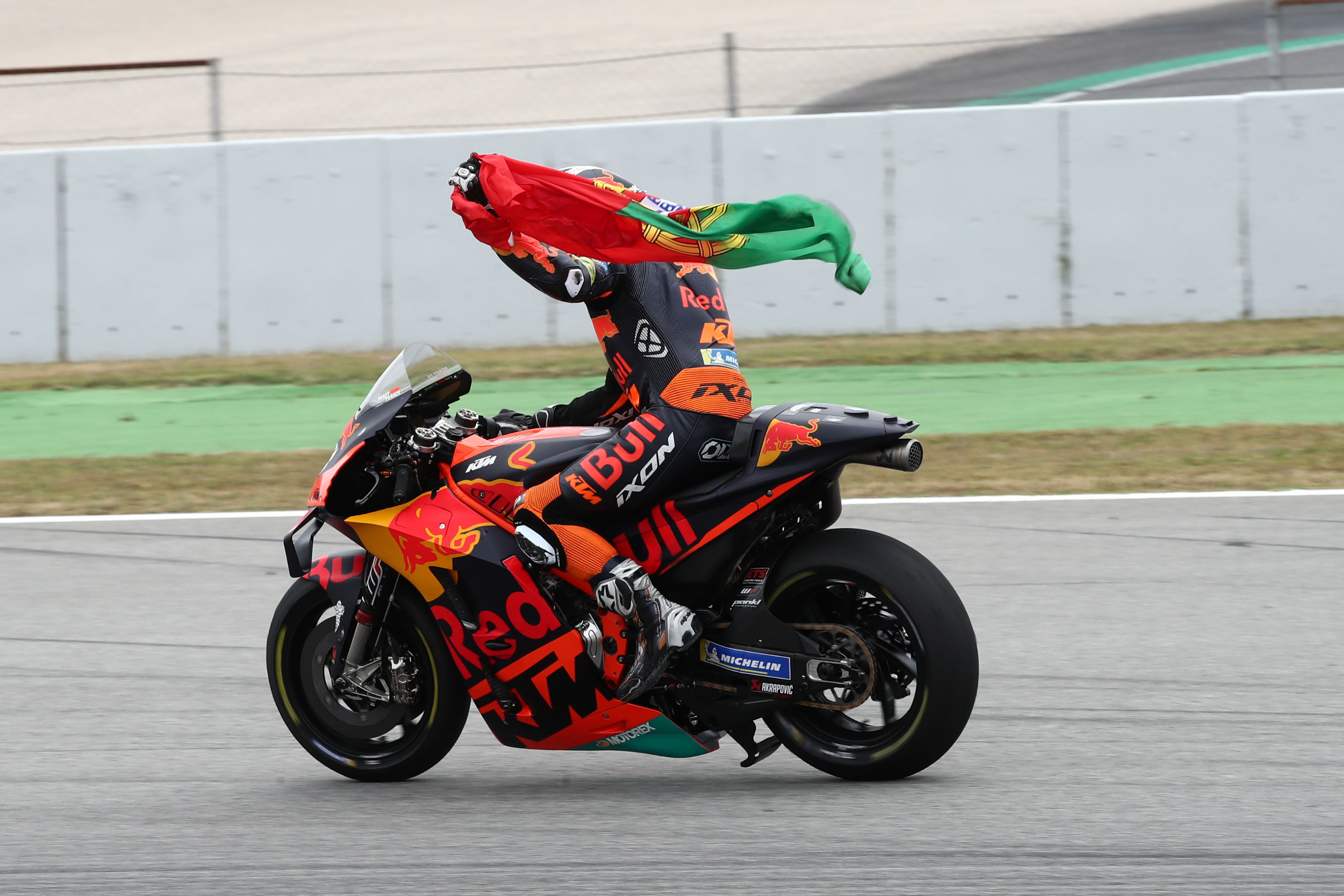With the news now official that Miguel Oliveira will leave the KTM fold for the first time in six seasons next year in order to join the RNF Aprilia team, it presents a valuable opportunity to discover something important about the four-time MotoGP race winner: has the inconsistency of his premier class career to date been entirely down to KTM’s difficult RC16 machine, or are there other factors at play?
Since joining the premier class in 2019, Oliveria’s results have been scattergun at best. He had a consistent but relatively anonymous rookie season, and ended the year 17th overall and fourth of the four rookies in the final standings.
That changed in 2020, of course, when he very much burst onto the scene with a dramatic final-corner victory over Jack Miller and Pol Espargro at the Red Bull Ring, and then backed it up again at his home round at Portimao, securing himself a factory seat for 2021 in the process.
Since getting that factory seat, though, Oliveira’s performances have continued to rise and fall. Twice more a race winner, at Barcelona in 2021 and again in the rain in Indonesia earlier this season, the Catalan Grand Prix win in particular stands out because it came in the midst of a minor run of form as he finished second both before and afterwards at Mugello and the Sachsenring.

But those four podiums, two wins and two seconds, are Oliveira’s only four in factory colours, with the rest of the 31 races more often than not ending with finishes outside of the top eight. That’s reflected in his final finishing position of 14th last year and the 10th he currently holds in this year’s championship.
The question of what’s caused so much inconsistency across Oliveria’s career is not an easy one to answer, though. The KTM RC16 is a machine with a performance that rapidly alters season by season and, often, weekend by weekend: it’s no surprise that his 2021 mid-season run of podiums came directly after the arrival of a new frame that addressed at least some of the issues KTM had been experiencing in the early part of the year.
But while there have often been correlated dips between Oliveria’s performance and those of his fellow KTM riders, there have been plenty of other occasions where he’s been well and truly outshone by them too – such as the opening race of 2022, when he crashed out as team-mate Brad Binder very nearly won the race.
If it’s not the bike, of course, it’s a much harder issue to treat. There are some mitigating factors for the 27-year-old, including a lingering bruised bone in his wrist that affected him for much longer than he initially let on. But Oliveira has been fully fit for the whole 2022 season and Binder is still outperforming him on the same machine.

Another issue might be motivation, knowing not only that his KTM future was likely to be non-existent and as a result distracted by contract negotiations that have allowed him to flirt from RNF Aprilia to Gresini Ducati, with a fresh KTM compilation dropped in only last weekend as it threw a three-year satellite deal on the table.
We’ll get an answer one way or another in 2023, though, with Oliveira set to inherit the completed 2022-spec Aprilia RS-GP machine in its new satellite squad. Consistently fast this year in the hands of Maverick Vinales and title contender Aleix Espargaro, it might even be a championship-winning machine come the end of the year if Espargaro can continue to claw back points against Fabio Quartararo.
And if that is the case, it may well present a difficult future for Oliveira, given what are likely to be high expectations from new team boss Razlan Razali – the man who, let’s not forget, expected Andrea Dovizioso to be fighting for the championship in 2022.





